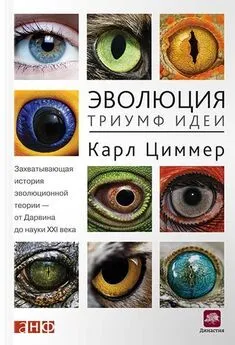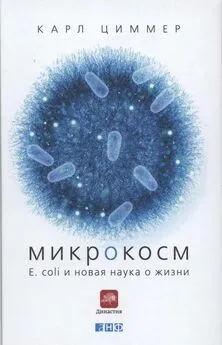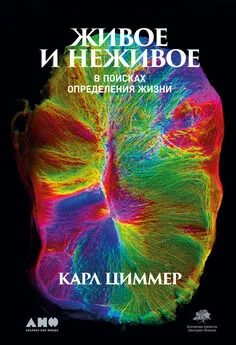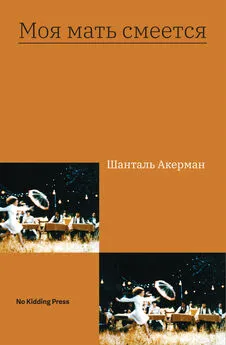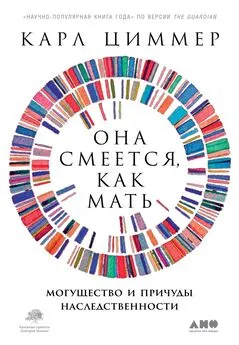Карл Циммер - Она смеется, как мать [Могущество и причуды наследственности] [litres]
- Название:Она смеется, как мать [Могущество и причуды наследственности] [litres]
- Автор:
- Жанр:
- Издательство:Литагент Альпина
- Год:2020
- Город:Москва
- ISBN:978-5-0013-9210-1
- Рейтинг:
- Избранное:Добавить в избранное
-
Отзывы:
-
Ваша оценка:
Карл Циммер - Она смеется, как мать [Могущество и причуды наследственности] [litres] краткое содержание
И культура, и традиции, география и экономика, технологии и то, в каком состоянии мы оставим планету, наконец. По мере развития науки появляется все больше способов вмешиваться в разные формы наследственности, что открывает потрясающие возможности, но одновременно ставит новые проблемы.
Технология CRISPR-Cas9, используемая для редактирования генома, генный драйв и создание яйцеклетки и сперматозоида из клеток кожи – список открытий растет с каждым днем, давая достаточно поводов для оптимизма… или беспокойства. В любом случае прежним мир уже не будет.
Карл Циммер знаменит своим умением рассказывать понятно. В этой важнейшей книге, которая основана на самых последних исследованиях и научных прорывах, автор снова доказал свое звание одного из лучших научных журналистов в мире.
Она смеется, как мать [Могущество и причуды наследственности] [litres] - читать онлайн бесплатно ознакомительный отрывок
Интервал:
Закладка:
Beutler, Ernest. 2001. “The Cline Affair.” Molecular Therapy 4: 396.
Bhardwaj, Ratan D., Maurice A. Curtis, Kirsty L. Spalding, Bruce A. Buchholz, David Fink, Thomas Björk-Eriksson, Claes Nordborg, and others. 2006. “Neocortical Neurogenesis in Humans Is Restricted to Development.” Proceedings of the National Academy of Sciences of the United States of America 103: 12564–68.
Bianchi, D. W., G. K. Zickwolf, G. J. Weil, S. Sylvester, and M. A. DeMaria. 1996. “Male Fetal Progenitor Cells Persist in Maternal Blood for as Long as 27 Years Postpartum.” Proceedings of the National Academy of Sciences of the United States of America 93: 705–08.
Bianchi, Diana W. 2007. “Robert E. Gross Lecture. Fetomaternal Cell Trafficking: A Story That Begins with Prenatal Diagnosis and May End with Stem Cell Therapy.” Journal of Pediatric Surgery 42: 12–18.
Bickel, H. 1996.”The First Treatment of Phenylketonuria.” European Journal of Pediatrics 155: S2S3.
Bicknell, Ross, Andrew Catanach, Melanie Hand, and Anna Koltunow. 2016. “Seeds of Doubt: Mendel’s Choice of Hieracium to Study Inheritance, a Case of Right Plant, Wrong Trait.” Theoretical and Applied Generics . l29: 2253–66.
Biesecker, Leslie. 2005. “Proteus Syndrome.” In Management of Genetic Syndromes. Edited by Suzanne B. Cassidy. New York: Wiley-Liss.
________. 2006. “The Challenges of Proteus Syndrome: Diagnosis and Management.” European Journal of Human Genetics 14: 1151–57.
Black, Sandra E., Paul J. Devereux, Petter Lundborg, and Kaveh Majlesi. 2015. “Poor Little Rich Kids? The Determinants of the Intergenerational Transmission of Wealth.” National Bureau of Economic Research Working Paper Series, working paper 21409. http://www.nber.org/papers/w21409(accessed September 11, 2017).
Blaine, Delabere. 1810. A Domestic Treatise on the Diseases of Horses and Dogs: So Conducted as to Enable Persons to Practise with Ease and Success on Their Own Animals. London: Printed for T. Boosey.
Blaser, Martin J., and Maria G. Domingucz-Bello. 2016. “The Human Microbiome before Birth.” Cell Host and Microbe 20: 558–60.
Blum, Matthias. 2016. “Inequality and Heights.” In The Oxford Handbook of Economics and Human Biology. Edited by John Komlos and Inas R. Kelly. Oxford: Oxford University Press.
Boddy, Amy M., Angelo Fortunate Melissa Wilson Sayres, and Athena Aktipis. 2015. “Fetal Microchimerism and Maternal Health: A Review and Evolutionary Analysis of Cooperation and Conflict beyond the Womb.” BioEssays 37: 1106–18.
Bohacek, Johannes, and Isabelle M. Mansuy. 2015. “Molecular Insights into Transgenerational Non-Genetic Inheritance of Acquired Behaviours.” Nature Reviews Genetics 16: 641–52.
Bohannon, John. 2013. “Why Are Some People So Smart? The Answer Could Spawn a Generation of Superbabies.” Wired, July 16.
Bonduriansky, Russell, and Troy Day. 2009. “Nongenetic Inheritance and Its Evolutionary Implications.” Annual Review of Ecology, Evolultion, and Systematics 40: 103–25.
________. 2018. Not Only Genes: Nongenetic Inheritance in Evolution and Human Life. Princeton: Princeton University Press.
Bonner, J. Т., and W. J. Bell Jr. 1984. “’What Is Money For?’: An Interview with Edwin Grant Conklin.” Proceedings of the American Philosophical Society 128: 79–84.
Boodman, Eric. 2017. “White Nationalists Are Flocking to Genetic Ancestry Tests. Some Don’t Like What They Find.” STAT , August 16. https://www.statnews.com/2017/08/16/white-nationalists-genetic-ancestry-test/(accessed September 10, 2017).
Boomsma, Dorret, Andreas Busjahn, and Leena Peltonen. 2002. “Classical Twin Studies and Beyond.” Nature Reviews Genetics 3: 872–82.
Boone, Charles, and Brenda J. Andrews. 2015. “The Indispensable Genome.” Science 350: 1028–29.
Bordenstein, Seth R. 2015. “Rethinking Heritability of the Microbiome.” Science 349: 1172–73.
Bossinger, Gerd, and Antanas Spokevicius. 2011. “Plant Chimaeras and Mosaics.” In Encyclopedia of Life Sciences. Chichester, UK: Wiley.
Boubakar, Leila, Julien Falk, Hugo Ducuing, Karine Thoinet, Florie Reynaud, Edmund Derrington, and Valerie Castellani. 2017. “Molecular Memory of Morphologies by Septins during Neuron Generation Allows Early Polarity Inheritance.” Neuron 95: 834–51.
Bouchard, Maryse F., Jonathan Chevrier, Kim G. Harley, Katherine Kogut, Michelle Vedar, Norma Calderon, Celina Trujillo, and others. 2011. “Prenatal Exposure to Organophosphate Pesticides and IQ in 7-Year-Old Children.” Environmental Health Perspectives 119: 1189–95.
Bourrat, Pierrick, Qiaoying Lu, and Eva Jablonka. 2017. “Why the Missing Heritability Might Not Be in the DNA.” BioEssays. doi: 10.1002/bies.201700067.
Boveri. Theodor. 2008. “Concerning the Origin of Malignant Tumours by Theodor Boveri.” Translated and annotated by Henry Harris. Journal of Cell Science 121, Suppl 1, 1–84.
Bowles, Samuel, Eric Alden Smith, and Monique Borgerhoff Mulder. 2010. “The Emergence and Persistence of Inequality in Premodern Societies.” Current Anthropology 51: 7–17.
Boyd, Robert. 2017. A Different Kind of Animal: How Culture Transformed Our Species. Princeton: Princeton University Press.
Brandt, Guido, Anna Szécsényi-Nagy, Christina Roth, Kurt Werner Alt, and Wolfgang Haak. 2015. “Human Paleogenetics of Europe – The Known Known sand the Known Unknowns.” Journal of Human Evolution 79: 73–92.
Breton, Sophie, and Donald T. Stewart. 2015. “Atypical Mitochondrial Inheritance Patterns in Eukaryotes.” Genome 58: 423–31.
Bright, Monika, and Silvia Bulgheresi. 2010. “A Complex Journey: Transmission of Microbial Symbionts.” Nature Reviews Microbiology 8: 218–30.
Brinch, Christian N., and Taryn Ann Galloway. 2012. “Schooling in Adolescence Raises IQ Scores.” Proceedings of the National Academy of Sciences of the United States of America 109: 425–30.
Broad, William J. 2007. “Useful Mutants, Bred with Radiation.” New York Times, August 28, F1.
Brown, Kyle S., Curtis W. Marean, Andy I. R. Herries, Zenobia Jacobs, Chantal Tribolo, David Braun, David L. Roberts, Michael C. Meyer, and Jocelyn Bernatchez. 2009. “Fire as an Engineering Tool of Early Modern Humans.” Science 325: 859–62.
Browne, E. J. 2002. Charles Darwin: The Power of Place. New York: Alfred A. Knopf.
Browne, Hilary P., B. Anne Neville, Samuel C. Forster, and Trevor D. Lawley. 2017. ”Transmission of the Gut Microbiota: Spreading of Health.” Nature Reviews Microbiology 15: 531–43.
Browne, Janet. 2016. “Inspiration to Perspiration: Francis Galton’s Hereditary Genius in Victorian Context.” In Genealogies of Genius. Edited by Joyce E. Chaplin and Darrin M. McMahon. New York: Springer.
Browne-Barbour, Vanessa S. 2015. “Mama’s Baby, Papa’s Maybe: Disestablishment of Paternity.” Akron Law Review 48: 263.
Browning, Sharon R., and Brian L. Browning. 2012. “Identity by Descent between Distant Relatives: Detection and Applications.” Annual Review of Genetics 46: 617–33.
Brucato, Nicolas, Pradiptajati Kusuma, Murray P. Cox, Denis Pierron, Gludhug A. Purnomo, Alexander Adelaar, Toomas Kivisild, Thierry Letellier, Herawati Sudoyo, and Krantjois-Xavier Ricaut. 2016. “Malagasy Genetic Ancestry Comes from an Historical Malay Trading Post in Southeast Borneo.” Molecular Biology and Evolution 33: 2396–2400.
Bryc, Katarzyna, Eric Y. Durand, J. Michael Macpherson, David Reich, and Joanna L. Mountain. 2015. “The Genetic Ancestry of African Americans, Latinos, and European Americans across the United States.” American Journal of Human Genetics 96: 37–53.
Buck, Carol. 1992. Introduction to The Child Who Never Grew. 2nd ed. Rockville, MD: Woodbine House.
Buck, Pearl. 1950. The Child Who Never Grew. New York: J. Day.
Buckingham, Margaret E., and Sigolene M. Meilhac. ”Tracing Cells for Tracking Cell Lineage and Clonal Behavior.” Developmental Cell 21: 394–409.
Budget Hearing – Food and Drug Administration | Committee on Appropriations, U. S. House of Representatives. March 27, 2014. http://appropriations.house.gov/calendar/eventsingle.aspx?EventID=373227(accessed March 29, 2017).
Bull, James J., and Harmit S. Malik. 2017. “The Gene Drive Bubble: New Realities.” PLOS Genetics 13: el006850.
Bulmer, M. G. 2003. Francis Gallon: Pioneer of Heredity and Biometry. Baltimore: Johns Hopkins University Press.
Burbank, Luther. 1904. “Some Fundamental Principles of Plant Breeding.” Proceedings of the International Conference on Plant Breeding and Hybridization. New York: Horticultural Society of New York.
________. 1906. The Training of the Human Plant. New York: Century Co.
________. 1939. Partner of Nature. New York: Appleton-Century Co.
________, and Wilbur Hall. 1927. The Harvest of the Years. Boston: Houghton Mifflin.
Burkhardt, Richard W. 2013. “Lamarck, Evolution, and the Inheritance of Acquired Characters.” Genetics 194: 793–805.
Burleigh, Michael. 2001. The Third Reich: A New History. New York: Hill and Wang.
Burman, Jeremy Trevelyan. 2012. “The Misunderstanding of Memes: Biography of an Unscientific Object, 1976–1999.” Perspectives on Science 20: 75–104.
Burnham, George Pickering. 1855. The History of the Hen Fever: A Humorous Record. New York: James French.
Burt, Austin, and Robert Trivers. 2006. Genes in Conflict: The Biology of Selfish Genetic Elements. Cambridge: Belknap Press of Harvard University Press.
Burt, Cyril. 1909. “Experimental Tests of General Intelligence.” British Journal of Psychology 3: 94–177.
Bushman, Diane M., and Jerold Chun. 2013. “The Genomically Mosaic Brain: Aneuploidy and More in Neural Diversity and Disease.” Seminars in Cell & Developmental Biology 24: 357–69.
Busslinger, Meinrad, and Alexander Tarakhovsky. 2014. “Epigenetic Control of Immunity.” Cold Spring Harbor Perspectives in Biology 6: a019307.
Bygren, Lars O., Pettcr Tinghög, John Carstensen, Sören Edvinsson, Gunnar Kaati, Marcus E., Pembrey, and Michael Sjöström. 2014. “Change in Paternal Grandmothers’ Early Food Supply Influenced Cardiovascular Mortality of the Female Grandchildren.” BMC Genetics 15: 12.
Byrne, Richard W., and Lisa G. Rapaport. 2011. “What Are We Learning from Teaching?” Animal Behaviour 82: 1207–11.
Calvin, Catherine M., G. David Batty, Geoff Der, Caroline E. Brett, Adele Taylor, Alison Pattie, Iva Čukić, and Ian J. Deary. 2017. “Childhood Intelligence in Relation to Major Causes of Death in 68 Year Follow-up: Prospective Population Study.” BMJ 357: j2708.
Campbell, Ian M., Bo Yuan, Caroline Robberecht, Rolph Pfundt, Przemyslaw Szafranski. Meriel E. McEntagart, Sandesh CS Nagamani, Ayelet Erez, Magdalena Bartnik, Barbara Wisniowiecka-Kowalnik, and others. 2014. “Parental Somatic Mosaicism Is Underrecognized and Influences Recurrence Risk of Genomic Disorders.” American Journal of Human Genetics 95: 173–82.
Campbell, Ian M., Chad A. Shaw, Pawel Stankiewsicz, and James R. Lupski. 2015. “Somatic Mosaicism: Implications for Disease and Transmission Genetics.” Trends in Genetics 31: 382–92.
Читать дальшеИнтервал:
Закладка:
![Обложка книги Карл Циммер - Она смеется, как мать [Могущество и причуды наследственности] [litres]](/books/1075049/karl-cimmer-ona-smeetsya-kak-mat-moguchestvo-i-pr.webp)

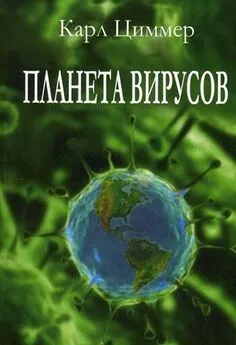
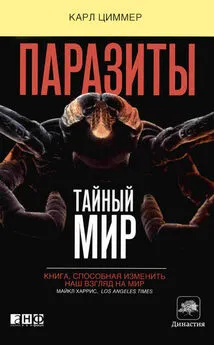

![Карл Циммер - Паразит – царь природы [Тайный мир самых опасных существ на Земле] [litres]](/books/1067054/karl-cimmer-parazit-car-prirody-tajnyj-mir-sam.webp)
